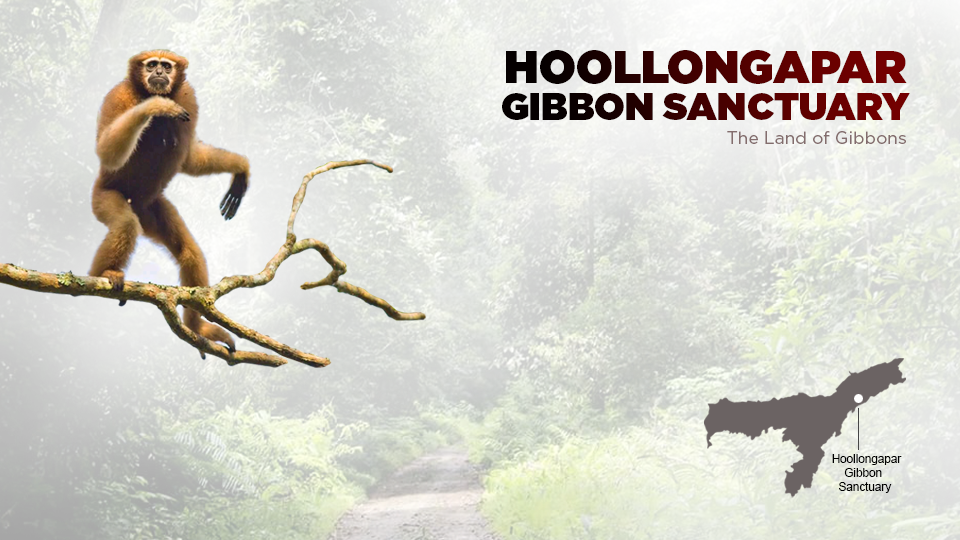Hollongapar Gibbon Wildlife Sanctuary

Hollongapar Gibbon Wildlife Sanctuary
Assam, a land which inherits and exhibits a variety of natural values, is a tourist hotspot typically for its tea and wildlife. Gifted with some of the wildlife species which are geographically unique to Assam, it also falls under one of the mega biodiversity zones in the world.
Assam’s forests cover high diversity of primates found in the county. The Hollongapar Gibbon Sanctuary is one such evergreen forest belt in Assam which is home to India’s only gibbon – The hoolock gibbons and Bengal slow loris (India’s only nocturnal primate).
Hoolock gibbon
Hoolock gibbon has long and slender arms, barely needing to step on the ground, this primate swings from one tree to another. Like all primates, gibbons are social animals and defends their boundaries strongly by vocal and visual displays. The families spent time singing solos, especially after dusk.
The sanctuary
Named after India’s only ape, hoolock gibbon, the Hollongapar Gibbon Wildlife sanctuary is a small sanctuary situated in Jorhat district with an area of 20.98 sqkms of semi-evergreen and evergreen patches, amidst tea gardens and human settlements. It was given the status of wildlife sanctuary by the Government of Assam in 1997.
As the sanctuary is specifically known for hoolock gibbon, there is a dense growth of Hollong tress, which is recognised as the sate tree of Assam. Other than gibbon and slow loris, the other primates found in the sanctuary are the Stump-tailed Macaque, Pig-tailed Macaque, Capped Langur, Rhesus Macaques, along with other habitats.
How to reach:
By Air: Jorhat Airport is the nearest.
By Rail: Mariani is the nearest railway junction.
By Road: Mariani has good road connectivity and the sanctuary is approximately 34 km from Jorhat city.





